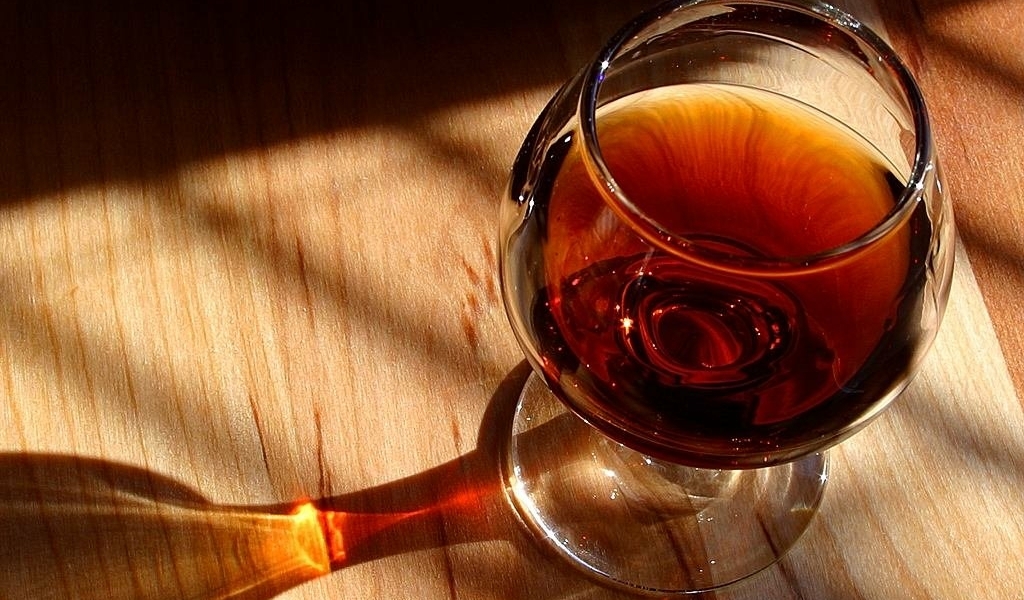The Ultimate Guide to the Cognac Region
Cognac is a breathtaking region of France. While the area boasts stunning countryside landscapes, it is best known for producing one of the world’s most highly esteemed spirits of the same name. Made from white wine, cognac is celebrated for its rich heritage, meticulous craftsmanship and unmistakable quality.
In this article, we provide a guide to the cognac region to invite you to discover the unique charm of this wonderful corner of France.
Where is the Cognac Region of France?
Let’s get this clear: is Cognac a region in France? It is indeed. The cognac region of France is located at the northern tip of the Aquitaine basin plains in the Charente département. It lies 120 kilometers above Bordeaux.
Featuring idyllic countryside hills, flourishing tree groves and the streaming Charente River, the picturesque region is beautiful to visit. Ever wondered where cognac is made in France? The Cognac region is the birthplace of this famous brandy.
What’s In Cognac and How is Cognac Made?
Cognac is strictly only made from white grapes that have been grown in the Cognac region. The production process is very specific. To make cognac, you need to do a double distillation of white wines, primarily from 90% Ugni Blanc grapes, with smaller amounts of other approved varieties.
It is aged for at least two years in French oak barrels from Limousin or Tronçais, and its unique character is shaped by the blending of brandies of different types and ages.
Cognac Sub Regions
If you were to look at a map of the cognac region, which is located in the state of Charente in France, you’d see it is divided into six subregions, known as crus. Each subregion has its own distinct climate and soil types, which influence the flavor profiles of the cognac produced there.
That’s why there is never an easy answer to the question of what cognac tastes like. Below, we go through the Cognac subregions and the distinct flavors to expect from the brandies made in each area.
Grande Champagne
Known for producing the finest and most elegant cognacs, Grande Champagne is characterized by hilly terrain and limestone soil, which gives its grapes excellent aging potential. Expect finesse, length and versatility from the cognacs produced in this region.
The second smallest of the Cognac crus, it covers around 34,703 hectares and lies just south of the town of Cognac.
Petite Champagne
Petite Champagne, on the other hand, is known for its floral, fruity brandies. The soil here is also primarily limestone but significantly more flat. The maritime climate has a greater influence on the grapes grown here.
name, Petite Champagne is the third largest of the Cognac regions. Brandies produced from this subregion are often delicate, light and flexible. Petite Champagne cognacs are frequently blended with those from Grande Champagne to create "Fine Champagne" cognacs, known for their depth and sophistication. For example, the famous Remy Martin.
Borderies
At under half the size of Grande Champagne, Borderies is the smallest and rarest cru, distinguished by its clay and flint-rich soil. Cognacs from this area are celebrated for their smooth, floral essence, often accented with subtle notes of violet and warm, nutty undertones. They mature faster than those from the Champagne crus, allowing for quicker development of rich and expressive flavors.
Fins Bois
Fins Bois surrounds the central crus and features diverse soils of thin, clay-limestone and stone that contribute to a broader flavor palette. Cognacs from this region are known for their full-bodied, round profile and vibrant fruitiness.
Fins Bois grapes age faster compared to the other Cognac regions. They are frequently used in blends to add balance and depth.
Bons Bois
Bons Bois, nestled on the fringes of the Cognac region, shares many characteristics with its neighbor Fins Bois. What makes it stand out from the others, however, is its unique terroir. The soil here is notably sandier, although it still contains the familiar clay and limestone.
This composition influences the flavor profile of the cognacs produced, resulting in a spirit that is often more approachable and rustic. The climate and soil lend a distinct fruitiness to the eaux-de-vie from Bons Bois, with hints of fresh orchard fruits and a soft, round finish that makes it particularly pleasant for those seeking a smoother, more relaxed drinking experience.
Bois Ordinaires (or Bois à Terroirs)
Bois Ordinaires, also known as Bois à Terroirs, stretches approximately 15 kilometers along France’s west coast, extending from La Rochelle to the Gironde River and including the islands of Île de Ré and Île d’Oléron.
The region’s close proximity to the coast plays a significant role in shaping the character of its cognacs. The sandy soil, typical of coastal areas, produces lighter spirits that reflect the maritime environment, imparting a fresh and distinctive quality to the cognac crafted here.
What’s the Best Way to Drink Cognac?
If you’re planning to enjoy some cognac, it’s important to get clued up on how you should be drinking it. Typically, cognac is served neat, with ice, or with a small splash of water, and is often poured into either a wide balloon glass or a smaller stemmed glass commonly used for whisky tastings.
Adding a drop of water can bring out the cognac’s fruity, floral, and spicy aromas, while a few ice cubes can have a similar effect. As the ice gradually melts, it reveals the complexity of the aromas, while keeping the drink cool and refreshing.
Cognac can also be frozen. As the high alcohol content prevents it from freezing entirely, maintaining a thick, velvety texture. If you prefer to enjoy cognac as a longer aperitif, you can mix it with tonic water or ginger ale. This method, which highlights many interesting notes within the brandy, is actually a traditional way of enjoying cognac, favored by locals in the Cognac region.
What is there to do in Cognac, France?
There are so many wonderful things to do in the Cognac region of France. Check out some of our top recommendations below.
Go on a Tasting Tour at a Cognac Distillery
Having put the region on the map, you may not be surprised to hear that one of the best things to do in the Cognac region is to go on a distillery tour to sample the region’s legendary brandy. The region’s spirit-making heritage dates back to the 16th century, when Dutch settlers arrived in the region to buy salt, wood, and wine. However, the long voyage home made it challenging to preserve the wine.
To solve this, they began distilling it into eau-de-vie. Over time, they discovered that distilling it a second time created a smoother, more refined, and enjoyable drink. This process marked the beginning of brandy. The term "brandy" is derived from the Dutch word "brandewijn," meaning "burnt wine."
Having become synonymous with its celebrated local spirit over the centuries, no visit to the area is complete without sampling it for yourself. While there are so many wonderful distilleries to explore in the region, we share two of the best distilleries in Cognac below.
Remy Martin
Remy Martin is a world-renowned distillery house that traces back to 1724. With over three centuries of experience, the esteemed beverages produced by the house reflect the expertise and passion of the generations who have shaped the House.
Take a distillery tour of Remy Martin to discover the rich traditions, ageing processes and ancestral heritage behind the distillery’s famous cognacs, followed by a guided tasting of the drinks for yourself. You may even be lucky enough to sample the house’s most prestigious Grande eaux-de-vie: Louis XIII.
Chateau de Cognac
When it comes to distillery tours in the French region of Cognac, it’s hard to top Chateau de Cognac. Situated in a sought-after location peering over the waters of the Charente River, the distillery house is an architectural masterpiece of Gothic and Renaissance architectural styles.
The chateau has a unique history, having originally been a 10th-century fortress that protected locals from Norman invasions. Then, it became a stately home before and the birthplace of François I and the historic cognac-making chateau we know today.
Discover the magic of Chateau de Cognac on a distillery tour that guides you through its fascinating origins and the expertise that goes into the production process. Along with discovering the heritage behind one of the world’s most esteemed cognacs, you can taste three house cognacs, including VSOP, XO Gold and EXTRA 1795.
Visit Cognac Old Town
If you’re in the Cognac region of France, you won’t want to miss out on visiting Cognac town’s medieval quarter. Otherwise known as “Vieux Cognac”, you can uncover the picturesque area by meandering along its enchanting cobblestone lanes and marveling at the breathtaking medieval architecture that runs along either side.
During your explorations, you’ll come across sculptures of the salamander which is the symbol of King François I, along with many gargoyles, castles and churches with elaborate facades.
Visit the Musée des Savoir-Faire du Cognac
Another great way to get a flavor for Cognac is to visit the Musée des Savoir-Faire du Cognac. Dive into the cultural and historical significance of the brandy, including all of the generations of families who have played a hand in the making of this world-renowned spirit over the years.
You can also learn all about the careful craftsmanship and artistry that goes into producing each and every bottle.
Wander Through Cognac Public Garden (Jardin Public)
Cognac Public Garden is another great place to explore in Cognac. The beautiful 7-hectare green space is located right in the heart of the town. It offers the perfect peaceful oasis to retreat to and catch your breath from all of your exploring.
You can relax and gaze over the flourishing flowerbeds, tree-lined paths and glittering ponds.
Walk Along La Charente
La Charente is a tranquil river that flows through the town of Cognac. It has played a significant role historically, serving as the trade centre of the city. King François also started the salt trade in Cognac which the waterway also played a key role in.
Wander along the promenade, soaking up the stunning waterside scenery, and also passing iconic sites such as the port of Cognac, the Hennessy House and le Chateau de Cognac. Alternatively, you can trade walking for setting sail along La Charente on a cruiser.
Summary
We hope that this guide to the cognac region of France has helped you get clued up on this iconic brandy-making corner of Europe. As you might expect from such a big name in the world of spirits, the best way to uncover the region of Cognac is to go out and sample the local eau de vie for yourself at one of its distilleries.
Want to discover the Cognac region of France? Take a look at our selection of spirit tours in Cognac that invite you to discover the city’s beautiful architecture and fascinating history, while also taking tasting tours of top distilleries in the region, famed for producing some of the world’s finest bottles of Cognac.






